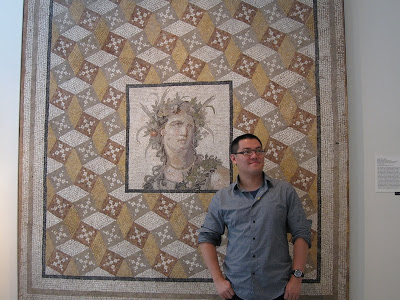The idea of "Pixel" in image format we are currently using today dates back to 2nd century AD, Rome.
For me, the most impressive piece of art in NYC Metropolitan Museum, is this one:
Mosaic floor panel
Roman, Imperial, 2nd century AD,
Excavated from a villa at Daphne near Antioch, the metropolis of Roman Syria
The root of "science" which is dominant world-widely today, stems from ancient Greek, also know as western culture. As a Chinese, I'd like to think of why the ancient Chinese culture which had dominated the world for centuries faded out in 19th century.
This Roman mosaic panel, ~ 100AD, in some sense, reflects the different thoughts (way of thinking) between eastern and western cultures.
Analytic is the major philosophy of science. Calculus is a good example of it. Analytic power provides a "scalable" way for research that can be inherited by next generation, which is lack in the eastern culture.
In this panel, thousands of tiny mosaics contribute to the holistic view of the "imaginary & continuous" object, which is believed to be a celebrity in that era. This provides a way of breaking down an infinitely impossible problem into some scalable and discrete steps. If the size of the mosaics are small enough, then we could approximate that "imaginary & continuous" object/concept to an acceptable extend.
On the other hand, Chinese culture or art prefer to capturing a holistic view of an object, in some abstract and implicit way ( which is believed to be the ultimately decent way of solving problems), like the wash drawing / paintings, and Chinese medicines. In a world of small scale, this way is good enough to achieve the engineering goal, but as the problem approaching to a larger scale, it is not a preferable way.
For nowadays, science with analytic power seems to be the best way and it dominates. The nice thing I found in the NYC Metro is that, this piece of art in the 100AD has a quick and direct answer.

No comments:
Post a Comment